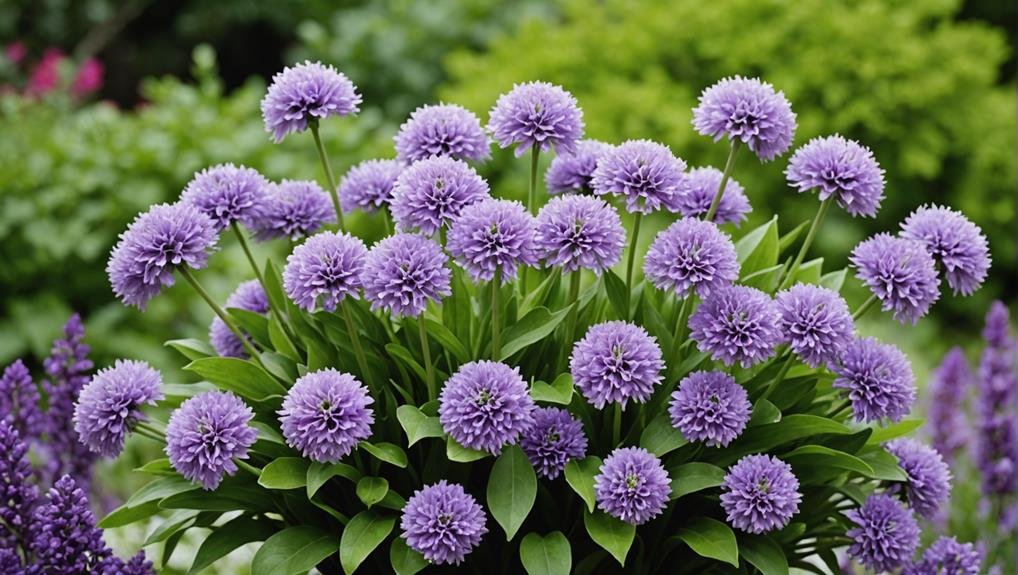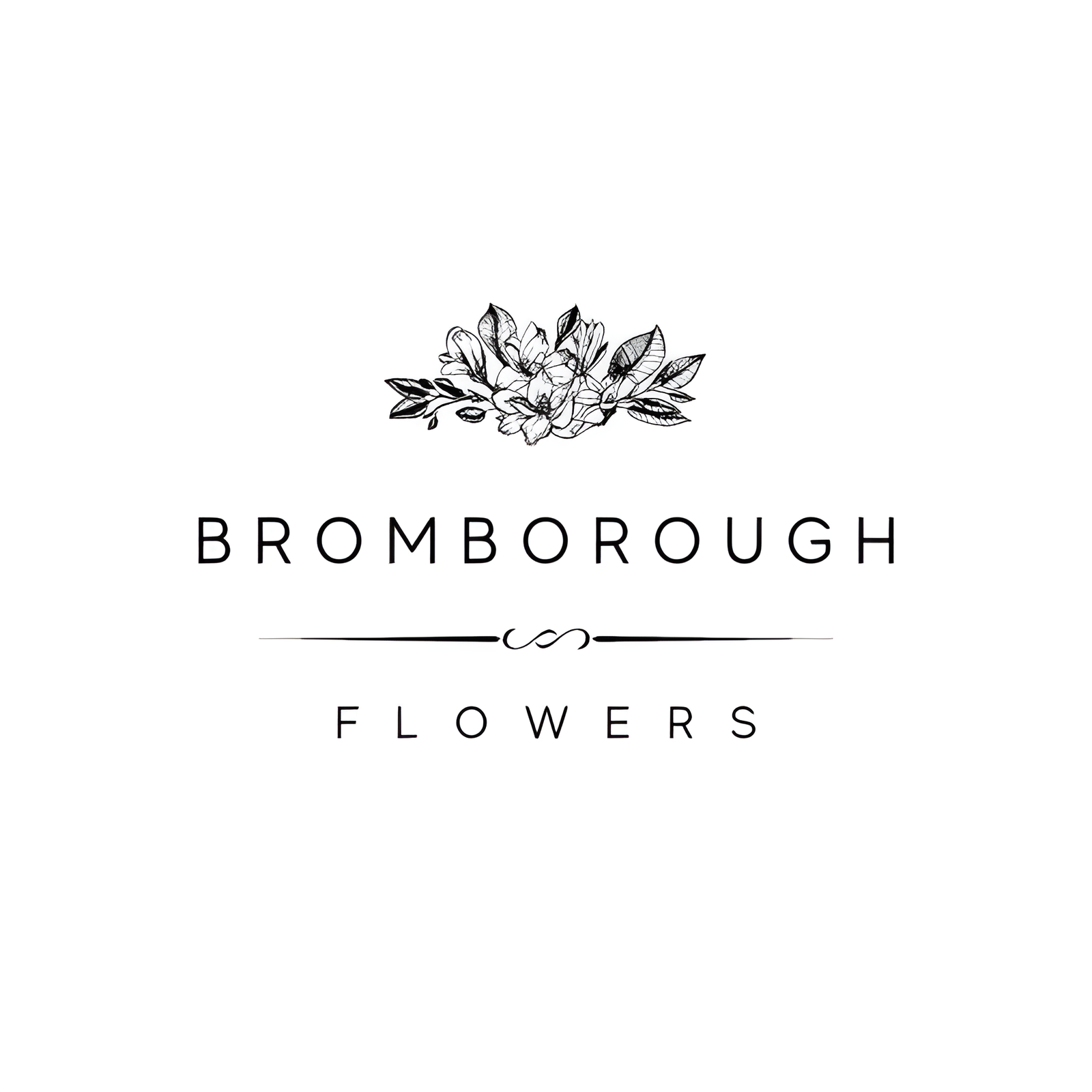When planning the floral arrangements for a wedding, one often overlooked yet stunning option is Trachelium. This versatile flower, distinguished by its delicate star-shaped blooms and dome-like structure, offers both elegance and texture to any bouquet or centerpiece. Particularly, Trachelium Corine White, with its sizable white blooms and 50cm stem length, creates a soft and romantic ambiance. Its ability to blend seamlessly with other flowers like anemones and eryngium makes it an invaluable addition to wedding decor. But what makes Trachelium truly stand out among other floral choices?
Flower Overview

Trachelium Corine White, known for its large white blooms and 50cm stem length, is a versatile and elegant choice for wedding floral arrangements. This variety of Trachelium is highly sought after for its ability to create a soft and romantic ambiance, making it ideal for weddings.
The large white blooms of Trachelium Corine White are particularly effective in blending seamlessly with other white flowers, such as anemones and eryngium, enhancing the overall aesthetic of the floral design.
Available in stem counts of 60 or 100, priced at $79.00 and $121.00 respectively, Trachelium Corine White provides flexibility for different size arrangements and budgets. The option for complimentary shipping on all orders further adds to its appeal, making it a cost-effective choice for wedding planners and floral designers.
Additionally, the provision for order modifications within seven days of the delivery date ensures that any last-minute changes can be accommodated, offering convenience and peace of mind during the wedding planning process.
Physical Description
With a detailed understanding of its versatility and appeal, it's important to examine the physical characteristics that make Trachelium Corine White a distinguished choice for wedding arrangements. These flowers present a delicate, yet intricate texture, making them ideal as fillers in both fresh and dried floral compositions.
The following features highlight the unique attributes of Trachelium:
- Tiny Flowers: Trachelium boasts an abundance of small, star-shaped blooms that collectively form a stunning, dome-like structure.
- Texture: The intricate appearance of these tiny flowers provides a refined and elegant touch, enhancing the overall aesthetic of wedding bouquets.
- Structure: Resembling the well-known Queen Anne's Lace, Trachelium's structural formation offers a distinctive and versatile addition to any floral arrangement.
- Freshness: These flowers are cut to order and shipped directly from Ecuadorian farms, ensuring that they arrive fresh and ready for wedding festivities.
Trachelium Corine White is celebrated for its ability to elevate floral designs with its delicate and sophisticated appearance. Its unique physical characteristics make it a popular and elegant choice for weddings and events, ensuring that every arrangement exudes a touch of class and beauty.
Available Colour Varieties

Among the diverse palette of Trachelium, colors such as purple, blue, pink, and white offer a wide array of options for wedding arrangements. Known for its versatility, Trachelium provides an excellent foundation for various design ideas, catering to different themes and preferences. The purple and blue variants are especially striking, adding depth and vibrancy to any bouquet or centerpiece. These rich hues can complement a wide range of other flowers, creating a visually enchanting display.
The pink Trachelium variant introduces a softer, romantic touch, ideal for weddings with a pastel color scheme. Its delicate appearance harmonizes well with roses, peonies, and other classic wedding flowers, providing a graceful and charming effect.
On the other hand, white Trachelium, such as the Trachelium Corine White, offers a timeless and elegant choice for bridal arrangements. The purity and sophistication of white Trachelium make it a popular option for creating stunning floral arrangements and bouquets. Incorporating white Trachelium stems into wedding decor adds a touch of refinement, making it suitable for both traditional and contemporary settings.
With such a diverse range of color options, Trachelium can seamlessly integrate into various wedding design ideas, enhancing the overall aesthetic.
Latin Name and Taxonomy
Derived from the Greek word 'Trachelos,' meaning neck, Trachelium Caeruleum belongs to the Campanulaceae family and is distinguished by its intricate texture and small, star-shaped blooms. This fascinating plant's nomenclature is rooted in its historical use for throat ailments, highlighting its longstanding significance in botanical medicine.
Trachelium Caeruleum shares familial ties with several other notable plants, including:
- Adenophora – Known for its bell-shaped flowers and medicinal properties.
- Platycodon – Often referred to as balloon flower due to its unique bud shape.
- Campanula – Recognized for its bell-like blooms and extensive variety.
- Trachelium – Featuring its distinctive star-shaped blooms and complex texture.
These relationships underscore Trachelium's place within a diverse and visually enchanting family of plants.
The star-shaped blooms of Trachelium are particularly valued in floral arrangements, offering a delicate yet striking aesthetic. This plant can be cultivated both indoors and outdoors, lending versatility to its use in various settings. Its taxonomy not only provides insight into its botanical lineage but also enhances its appeal for wedding decorations and other ornamental purposes.
Understanding the Latin name and taxonomy of Trachelium Caeruleum enriches our appreciation of this elegant flowering plant.
Geographical Origins

The Trachelium Caeruleum traces its roots to the sun-drenched landscapes of Portugal and the broader Mediterranean regions. This distinctive plant, commonly known as blue throatwort, thrives in the warm, temperate climates characteristic of these areas. Originating from the Campanulaceae family, trachelium shares botanical ties with other well-known genera such as Adenophora, Platycodon, and Campanula. Its Mediterranean origins are reflected in its ability to flourish both indoors and outdoors, demonstrating a versatility that has endeared it to gardeners and florists alike.
The blue throatwort's historical popularity is not confined to its geographical roots alone. It has also been embraced by adherents of the Doctrine of Signatures, who believed that the physical characteristics of plants could indicate their therapeutic benefits. This historical context adds depth to the appreciation of trachelium, linking its geographical origin to its cultural and medicinal significance.
Season Availability
Beyond its rich historical and geographical significance, trachelium's year-round availability makes it a highly sought-after choice for wedding floral arrangements. This versatility allows couples to incorporate trachelium into their wedding decor regardless of the season, ensuring that its intricate texture and long-lasting blooms are always accessible.
While trachelium is available throughout the year, its peak season spans from late spring to early autumn. During this period, the blooms are particularly abundant, making them an ideal choice for summer weddings. The flower's consistent availability in various colors adds another layer of flexibility, allowing it to complement any wedding color palette seamlessly. Whether used as a focal point or a complementary flower, trachelium enhances wedding floral arrangements by adding depth and elegance.
To visualize its seasonal appeal, consider these key points:
- Winter Weddings: Incorporate deep hues of trachelium to add warmth and richness.
- Spring Ceremonies: Utilize its fresh, vibrant shades to celebrate new beginnings.
- Summer Celebrations: Take advantage of its peak season for lush, full arrangements.
- Autumn Events: Blend trachelium's muted tones with fall foliage for a sophisticated look.
Growing Conditions

Cultivating trachelium successfully hinges on providing well-drained, moist soil and ample daylight. An environment that mimics its native Mediterranean habitat will yield the most vibrant blooms. Gardeners should aim to plant trachelium seeds in late winter, making sure the young plants can benefit from the longer daylight hours in spring and summer. Trachelium requires 16-18 hours of daylight to reach its full blooming potential, making it vital to select a well-lit spot in your garden or home.
Unlike its relative, Queen Anne's Lace, trachelium is versatile and can thrive both indoors and outdoors. This flexibility allows it to be a charming addition to various garden settings and container arrangements. Regular deadheading, the practice of removing spent flowers, is essential for promoting prolonged bloom periods and maintaining plant health. This routine care encourages the plant to produce fresh flowers continuously.
When planting trachelium, make sure the soil is consistently moist but well-drained to prevent root rot. The plant's resilience in different environments makes it an excellent choice for gardeners of all levels. By providing the right growing conditions, trachelium can flourish, adding a touch of elegance to any floral arrangement or garden display.
Cultural Significance
Frequently celebrated for its symbolic meanings, trachelium holds a unique place in wedding floral arrangements. Known for representing neglected beauty and elegance, trachelium adds a layer of sophistication to any bouquet. Its delicate star-shaped blooms not only enhance the visual appeal but also contribute to the overall texture and depth of floral designs. The name trachelium, derived from Greek, translates to 'rough throat,' which can also symbolize strength and resilience in marriage, a fitting sentiment for such a significant occasion.
The versatility of trachelium's colors—white, blue, pink, and purple—enables it to complement a range of wedding color palettes seamlessly. Additionally, its ability to attract butterflies, bees, and birds can infuse a whimsical, natural touch into wedding floral designs, making them more lively and enchanting.
To paint a vivid picture, imagine an arrangement of Queen Anne's lace paired with trachelium:
- White trachelium interspersed with Queen Anne's lace to create a pure, elegant theme.
- Blue trachelium alongside lavender roses for a serene, calming effect.
- Pink trachelium with peonies to add a romantic flair.
- Purple trachelium with hydrangeas for a bold, vibrant statement.
Trachelium, with its rich cultural significance, undeniably enhances wedding floral arrangements.
Typical Use in Weddings

In wedding floral arrangements, trachelium is commonly used as a filler flower, enriching bouquets, centerpieces, and other decorative compositions with its delicate, star-shaped blooms. These intricately textured flowers add significant volume and depth to any floral design, making them a favored choice for brides and florists alike. The versatility of trachelium allows it to seamlessly blend with various wedding themes and color palettes, from classic white-and-green arrangements to vibrant, contemporary designs.
One of the notable advantages of trachelium is its impressive longevity. When properly cared for, this flower can last up to 14 days, ensuring that arrangements maintain their fresh, charming appearance throughout the wedding festivities. This longevity is particularly advantageous for events that span multiple days or for couples who wish to preserve their floral decorations for post-wedding celebrations.
Symbolizing neglected beauty, trachelium adds a layer of meaningful elegance to wedding florals. Whether it's enhancing the lushness of a bridal bouquet or adding intricate detail to a centerpiece, trachelium serves as an unsung hero in the bloom arrangement of Queen-worthy wedding designs. Its subtle yet impactful presence makes it an indispensable component of sophisticated wedding floral compositions.
Alternative Flower Types
Exploring alternative flower types for wedding arrangements can open up a world of unique textures, colors, and forms that add distinct character to the overall floral design. While Trachelium is a fantastic choice, new flower picks brought into the mix can diversify and enrich the aesthetic of your wedding.
Consider the following alternatives:
- Scabiosa: Known for its pincushion-like blooms, Scabiosa adds an airy, whimsical feel to any arrangement. Its variety of hues, including soft pastels and deep purples, makes it versatile for numerous themes.
- Astrantia: With its star-shaped, intricate petals, Astrantia offers a rustic charm. This flower's muted color palette, ranging from white to deep burgundy, complements romantic and vintage wedding styles.
- Eryngium (Sea Holly): Eryngium's spiky texture and silvery-blue tones introduce an unexpected element to bouquets and centerpieces, perfect for modern or coastal-themed weddings.
- Allium: Featuring globe-like clusters of tiny flowers, Allium can create striking visual interest. Available in shades of purple and white, it's an excellent choice for bold, contemporary designs.
Incorporating these new flower picks brought into your wedding arrangements can elevate the visual experience, ensuring your floral displays are as memorable as the occasion itself.
